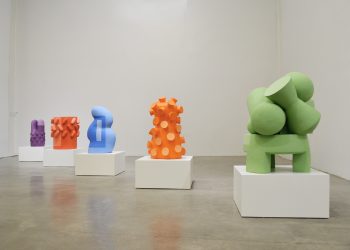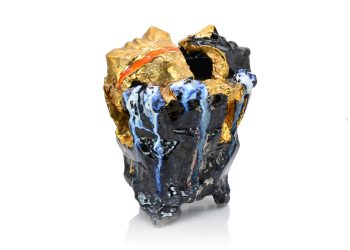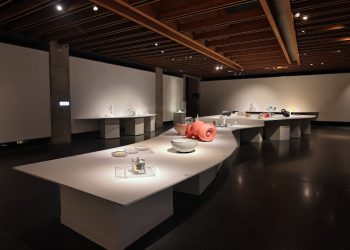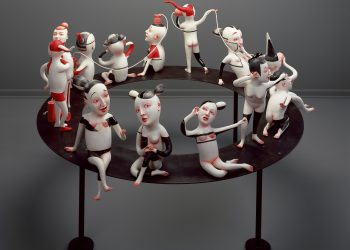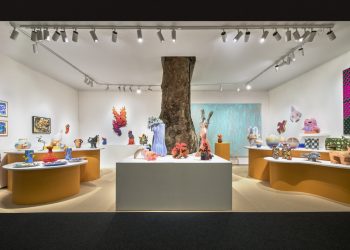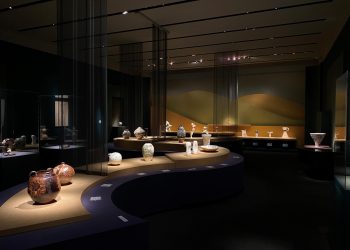
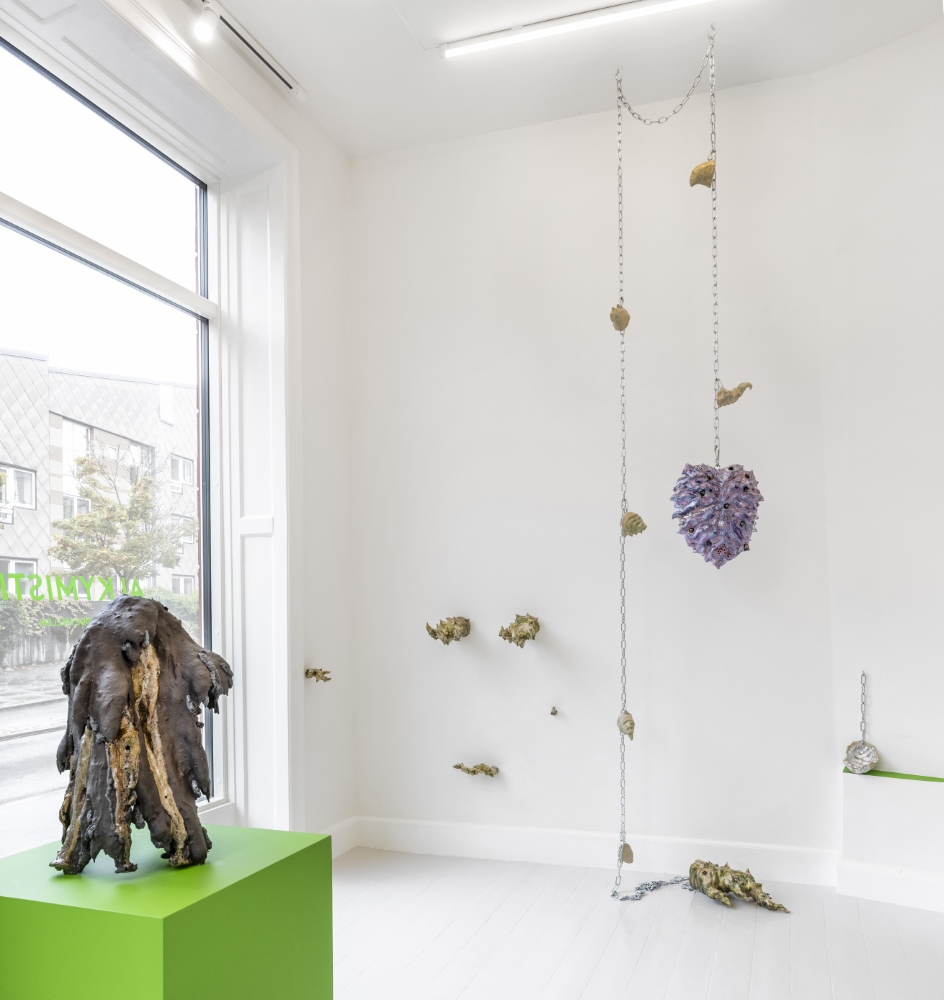
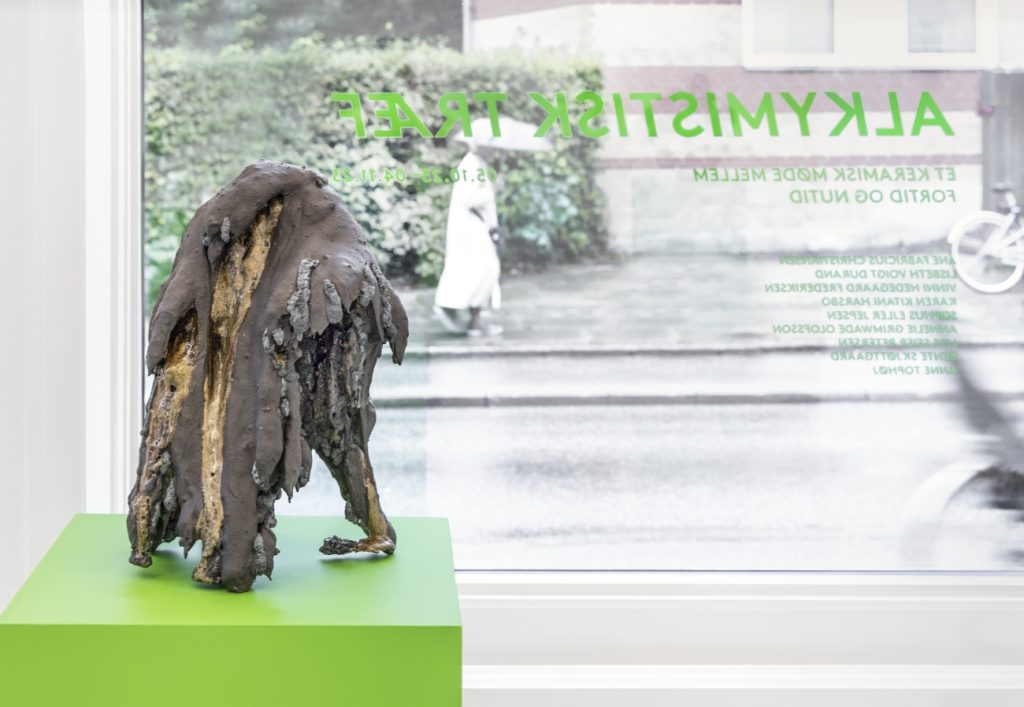
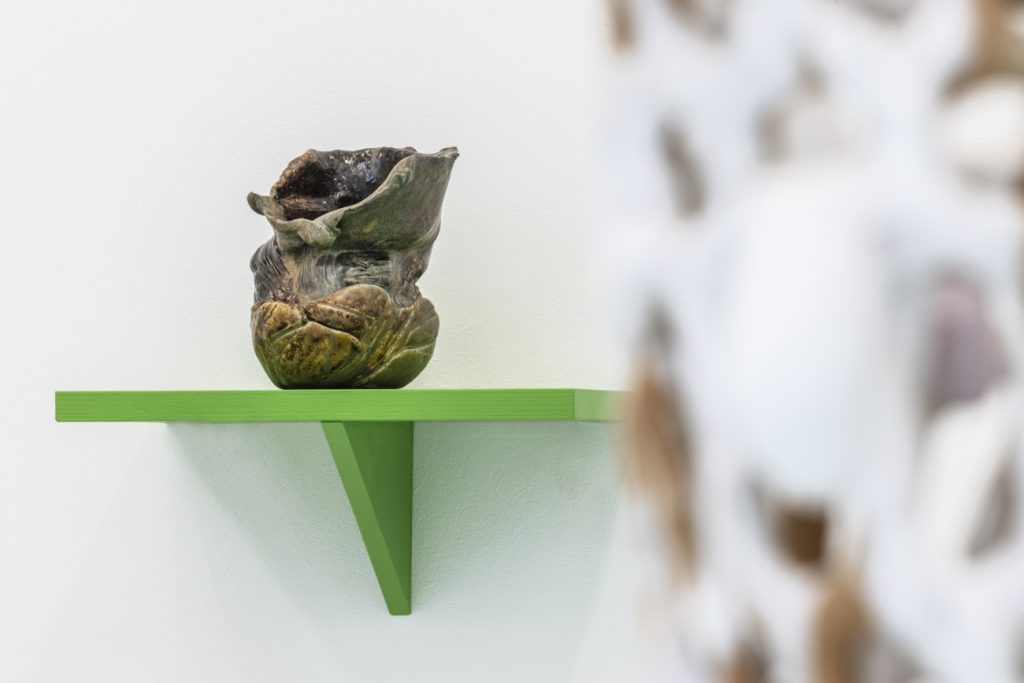
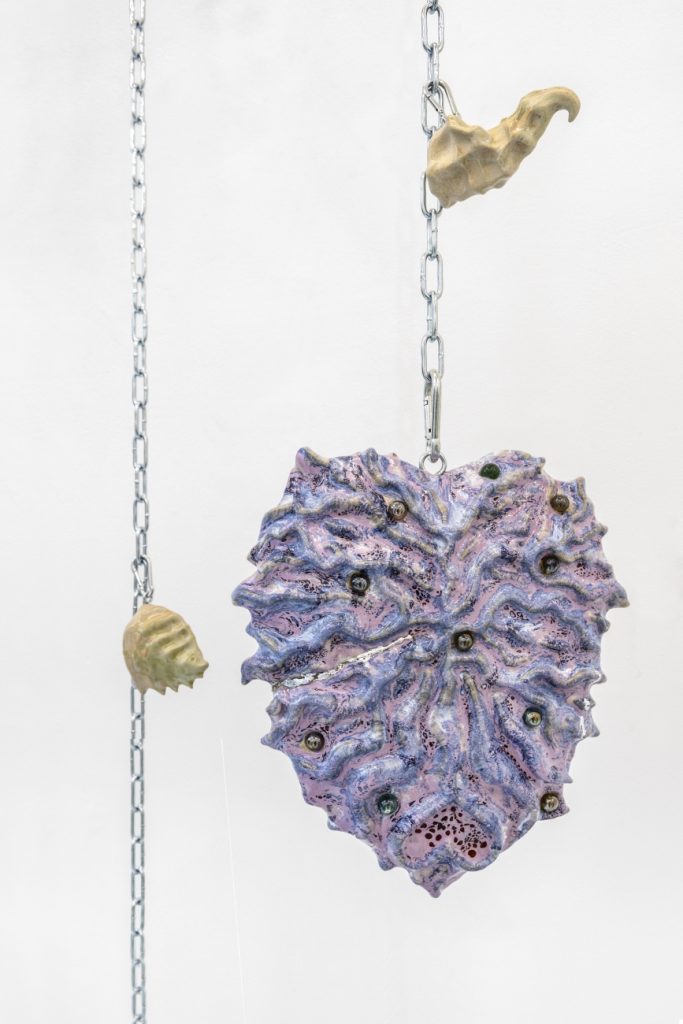


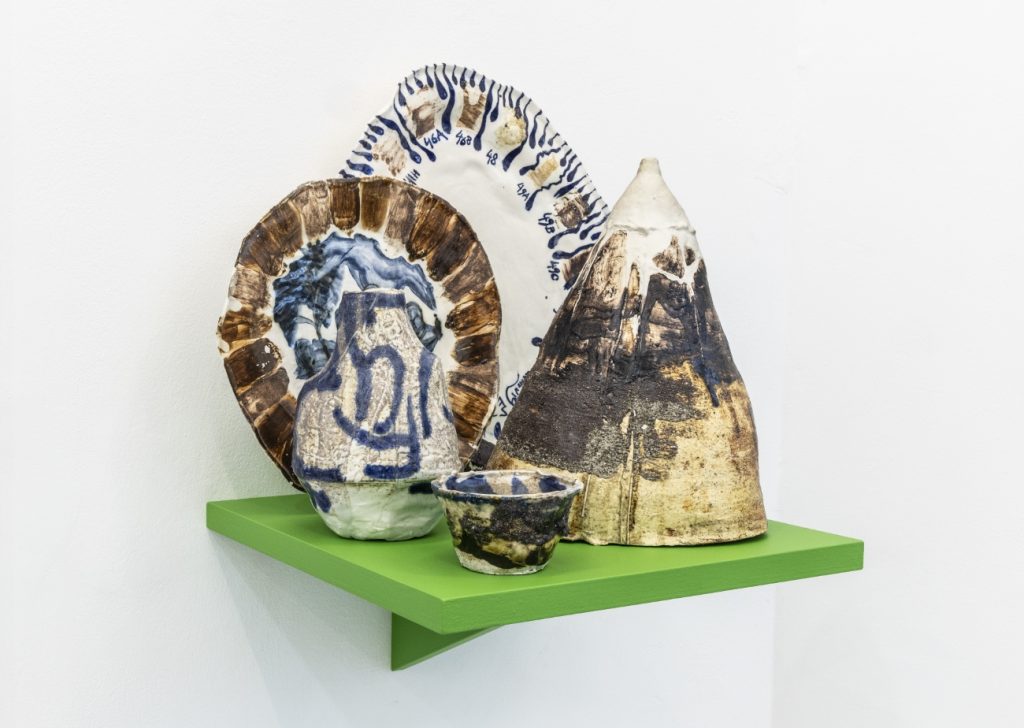
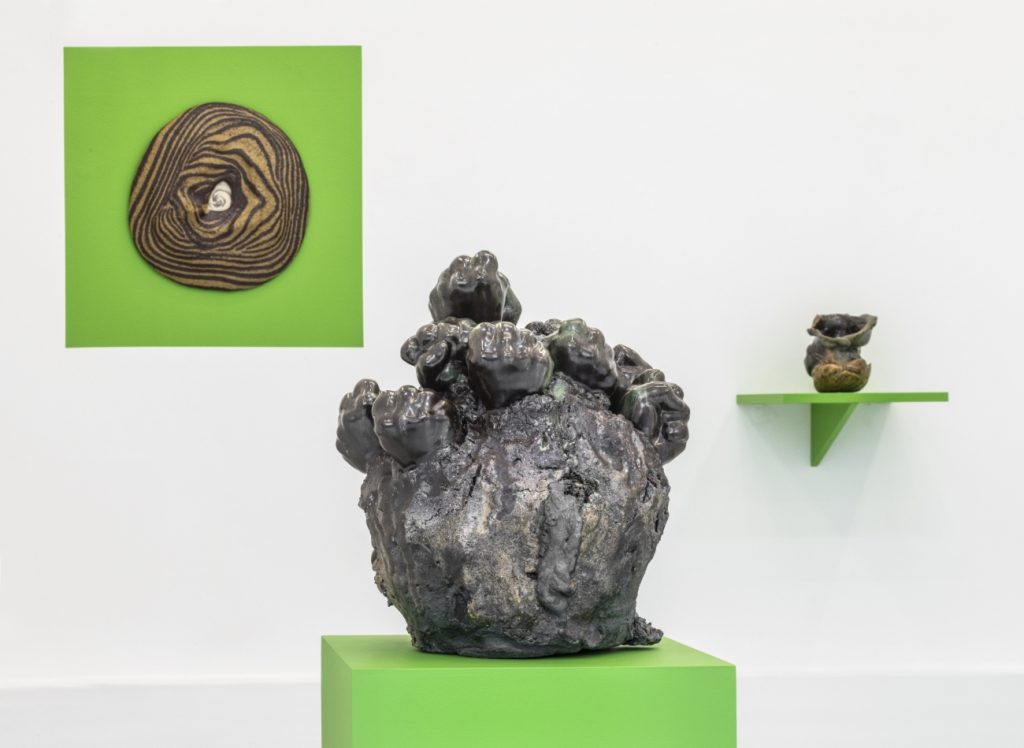
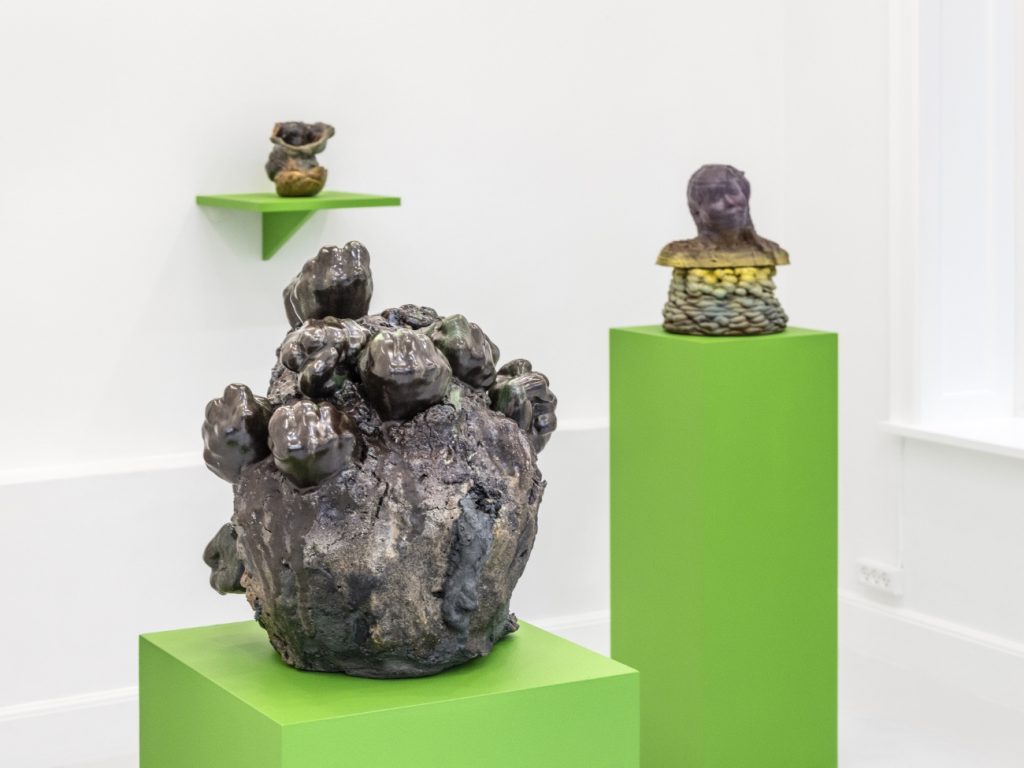
Alchemists’ Convention: A ceramic meeting between past and present is on view at Peach Corner, Copenhagen
October 5 – November 4, 2023
ALCHEMISTS’ CONVENTION is a research-based project and group exhibition drawing inspiration from sculptor Niels Hansen Jacobsen’s (1861–1941) ceramics at Vejen Art Museum.
The project has been in the making for a couple of years and included three workshops at Vejen Art Museum. In an in-depth study of Niels Hansen Jacobsen’s working process, the participating artists found inspiration and incorporated new or rediscovered materials and methods into their own works.
The result of this explorative approach is presented in a large group exhibition that opened on 10 September at Vejen Art Museum, while Peach Corner hosts the launch of the book about the project and a satellite exhibition focusing on a single significant piece by each of the participating artists.
The exhibition title, ALCHEMISTS’ CONVENTION, refers to ceramic makers’ and artists’ in-depth experiments with chemistry and metals. In one of the workshops, we had the pleasure of hearing Jan Bäcklund explain how ceramic relates to alchemy.
Many thanks to Vejen Art Museum, Museum Director Teresa Nielsen and other project partners and to the initiators of ALCHEMISTS’ CONVENTION, Ane Fabricius Christiansen and Vinni Hedegaard Frederiksen.
The project has received support from the Danish Arts Foundation, the Augustinus Foundation, the A.P. Moller Foundation and Beckett-Fonden.
About the artists
Ane Fabricius Christiansen (b. 1978) walked in Niels Hansen Jacobsen’s footsteps, experimenting with locally sourced materials, inclu ding clay from Skibelund and metal from the iron foundry Uldalls Jernstøberi in Vejen. Ane Fabricius’s works contain an entire universe of nuanced colours and textures, from shiny glazes to coarse, bubbly masses. What might, at first glance, look like a sloppy approach to materials is in fact carefully planned – a playful engagement with gravity and melting points and an attempt at balancing controlled and uncontrolled processes in a single abstract form.
Lisbeth Voigt Durand (b. 1946) used chemical calculations based on Seger formulas and analyses of Niels Hansen Jacobsen’s glazes to produce a large number of new glaze samples. The process involved XRF analyses carried out by Arne Jouttijärvi, Heimdal archaeo metry, Hansen Jacobsen’s notes in old ledgers and address books and glaze recipes from the workshop of Jean Carriès, who was Hansen Jacobsen’s neighbour in Paris. At Peach Corner, Lisbeth V. Durand presents a small series of wheel-thrown cylinders. Her goal was to maintain focus on glazes, and small nuances and textural variations are easier to appreciate on simple, similar forms.
Vinni Hedegaard Frederiksen (b. 1975) created casts of her own fists. The reproduced hands are smooth, in contrast to the raw clay, which Vinni dug up in Skibelund and Vejen. They are also symbolically powerful. An excavation of Hansen Jacobsen’s kitchen midden revealed a collapsed ceramic piece that had melted and fused with the kiln posts and shelf. To Vinni Frederiksen, this ‘accident’ has a powerful and sculptural expression; it also shows that at times, Hansen Jacobsen struggled with clay, glazes and firing.
Karen Kitani Harsbo (b. 1963) looked to the portrait bust, a genre that Hansen Jacobsen also worked in. The sculptures shown at Peach Corner refer to the Roman figure Janus, the god of beginnings and transitions, who looks towards both past and future. Here, Janus is manifested as a ceramic sculpture, a medium with a long cultural past but produced using the futuristic technology of 3D printing. The material is porcelain, and some of the glazes are the results of experiments in workshops at the Alchemists’ Convention.
Sophus Ejler Jepsen (b. 1971) presents ceramic artefacts from three so-called shadow stories: ‘Frankensteins Kop&Bryst’ (Frankens tein’s Cup&Chest), ‘Fiskeren og hans Sjæl i en Flaske’ (‘The Fisherman and His Soul in a Bottle’) and two dishes from ‘Peter Schlem ihls Te-selskab’ (Peter Schlemihl’s Tea Party). The sculpture Skyggen (The Shadow) is Niels Hansen Jacobsen’s principal piece, and in recent years, as the museum’s art facilitator, sculptor Sophus Ejler Jepsen has retold and reinterpreted existing ‘shadow stories’ in words, music, painting and ceramic.
Annelie Grimwade Olofsson (b. 1991) worked with the Gothic expression in Hansen Jacobsen’s sculptural practice. His Trolden (Troll) provided a mythological perspective. Elements of the troll’s body parts can be seen in Annelie’s morphological plant creatures: the gripping claw, the spine and her finger marks in the clay. Annelie Grimwade also used colour oxides in her glazes based on XRF analyses of Hansen Jacobsen’s glazes.
Lise Seier Petersen (b. 1952) has worked with melting clay for a number of years, particularly with studies of earthenware clay’s mel ting point and sintering interval (the range from the temperature at which the clay begins to deform to the temperature at which it is liquid). In the resulting liquid forms, Lise Seier draws parallels to the drapery in Niels Hansen Jacobsen’s sculptures. The object shown at Peach Corner is a wheel-thrown cone in blue and red clay with an interior pipeclay coating. The object’s appearance after firing is determined by the interaction between the hand-crafting process and the laws of physics.
Bente Skjøttgaard (b. 1961) focused on the metal mountings that Niels Hansen Jacobsen created during his time in Paris (ca. 1892– 1900). At one of the workshops in Vejen, experiments were carried out with casts made of a zinc-tin alloy using cire perdue technique under the guidance of goldsmith Boy Johansen from Aarhus. Some of the plaster moulds cracked, and the metal leaked into the sand. This resulted in beautiful sand-cast shapes, which Bente Skjøttgaard used in her work. At Peach Corner, she presents a piece from her series Stamtræer (Family Trees) that includes both sand-cast tin and a bone-ash foam glaze from another experiment based on the XRF analyses.
Anne Tophøj (b. 1960) drew inspiration from Niels Hansen Jacobsen’s loose, random form and glaze expressions. Aiming to seize and build on chance occurrences, as he also appears to have done, she engaged in a dynamic flow, where things happened and developed as the process unfolded. Anne Tophøj uses a jollying technique that involves a high degree of chance and variation in form. The result is wild shapes with a dynamic, flowing or sliding character.
Contact
info@peachcorner.dk
Peach Corner
Howitzvej 67 A, st. tv.
2000 Frederiksberg
Denmark
Photos by Ole Akhøj




